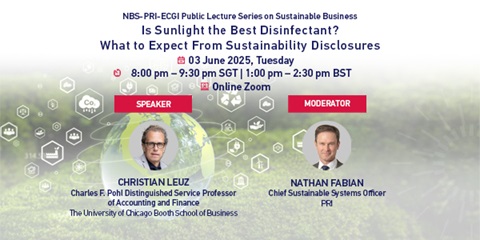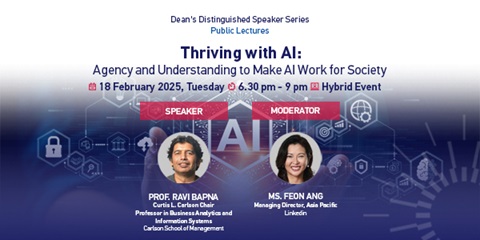Race to reduce Singapore F1's carbon footprint a good start, but experts are mixed on its impact
As Singapore F1's major sporting event takes place all over the world, it is not possible to eliminate emissions generated by logistics and transport completely, says Prof S Viswanathan, director of the Centre for Business Sustainability.
From replacing fossil fuels with more sustainable alternatives to going electric where possible, it seems like the Singapore Formula 1 Grand Prix is kicking climate action into higher gear.
When the night race returns to the streets of Marina Bay in September – after a two-year hiatus due to the pandemic – a full sustainability audit will also be conducted, which could see data such as the amount of carbon emissions and waste generated by the event being measured and reported for the first time.
The Singapore Tourism Board (STB) and race organiser Singapore GP said the audit will help to guide the development of other green initiatives that will be implemented over the next seven years under a renewed contract for Singapore to host the Formula 1 Grand Prix.
Starting this year, two parties will work together to reduce the carbon footprint of the Singapore race.
Responding to CNA’s queries, a spokesperson from Singapore GP said that the existing track lighting will be replaced with more energy-efficient LED lights from 2023, and that it will switch to electric or hybrid support vehicles where applicable.
The hope is to make the entire event one of the most environmentally sustainable street circuits in the F1 calendar, tying in with the championship’s goal of becoming net-zero by 2030.
However, while the sustainability audit and green initiatives are a step in the right direction, experts CNA spoke to were mixed on whether the efforts would be enough to reduce the gas-guzzling sport’s carbon footprint.
An F1 report published in 2019 estimated that more than 256,000 tons of carbon emissions are generated each season, including direct and indirect emissions. That is roughly the equivalent of emissions produced by 55,600 cars each year.
Out of this, 45 per cent comes from air, sea and road transport required logistically to put on each race, with a further 27.7 per cent generated from the transport of personnel, promoters and partners.
As the major sporting event takes place all over the world, it is not possible to eliminate emissions generated by logistics and transport completely, said Professor Vish S Viswanathan, director of the Centre for Business Sustainability at Nanyang Technological University (NTU).
“To reduce emissions, (the organisers) could possibly consider and evaluate a modal shift for transport, meaning that instead of transporting car-related items by air, they can move towards less-carbon intensive modes of transport such as ocean freight,” he said.
But with ocean freight being slower than air transport, Prof Viswanathan said this could pose a logistical and scheduling challenge for organisers, especially with the races taking place in quick succession and held all over the world.
“This means that either there have to be custom-built vessels that complete the shipment of the items from one location to another very quickly, or there have to be duplicates of the cars and other related assets that are deployed only at alternative locations such as every second or third race venue,” he said, adding that this will provide a greater lead time for transport.
“Having multiple sets of equipment means the manufacturing carbon footprint might go up a little bit so that's a trade-off they will have to make but it’s an area where they can actually think of solutions and work on it,” he added.
Sustainability consultant K Sadashiv, who is a board director at sustainability non-profit Forum for the Future, said sourcing locally could also help to lower the number of items that need to be transported from overseas, further reducing emissions.
SWITCHING TO SUSTAINABLE FUELS
As part of its sustainability plans, F1 also announced that it would move towards sustainable fuels.
To do this, the championship is currently developing its own 100 per cent “sustainable” fuel, using components that come from either a carbon capture scheme, municipal waste or non-food biomass. It is currently in talks with companies about supplying fuel for the races, with an eye towards scaling up production for mainstream public use.
A working group, which includes power unit manufacturers and fuel suppliers, has also been established to form F1’s new engine regulations for 2025 that will include mandating a ”fully sustainable” fuel source.
In the meantime, new regulations – which kick in this year – will force the F1 teams to freeze the development of engines, in a bid to reduce cost and reach carbon neutrality.
Despite these efforts, some including world champion Lewis Hamilton and Aston Martin driver Sebastian Vettel have criticised the sport’s green push for not moving fast enough or being environmentally relevant.
Echoing their sentiments, Associate Professor of Science, Technology and Society Winston Chow from the Singapore Management University (SMU) said while using ethanol or biofuels is a start, such fuels still emit greenhouse gases and require elements of carbon capture technology to be net-zero.
If the goal is to advance the use of cleaner energy sources in general transportation, technology related to electric vehicles would be more relevant in the years to come as more countries switch from gasoline or diesel cars to electric vehicles, said Assoc Prof Chow.
CHANGING MINDSETS
Ultimately, experts agreed that the commitment from F1, as well as measures to be implemented by SGP and STB, is “a start” and one that is aligned with Singapore’s national sustainability plan.
By linking local tourism to the green economy, it also ensures that any action would not be dropped after one or two years, said Assoc Prof Chow.
However, what is equally crucial is getting attendees to buy in on environmental sustainability, said Dr Nanthinee Jevanandam, director of sustainability think-tank Earthys.
“The nature of events is that they tend to be quite indulgent and often generate large amounts of unnecessary waste, like leftover gift bags for attendees or materials used for the event set up,” said Dr Jevanandam.
“So when organisers choose to go green and decide to do away with unnecessary items or opt for more sustainable options, organisers are concerned that event attendees may not appreciate this, which could affect their event experience.
“But the flip side of this is that you also need the attendees to embrace going green in order for the event to be successful, so they actually play a very important role in the event’s push towards sustainability,” she added.
“At the end of the day, we can't say we want to be 100 per cent green and just say no to everything, that's just not the direction to go,” said Dr Jevanandam.
“It's about balance, so it's about doing the things that benefits the country but in a much more sustainable fashion.”
Source: Channel News Asia




.tmb-listing.jpg?Culture=en&sfvrsn=8b2cb369_1)


